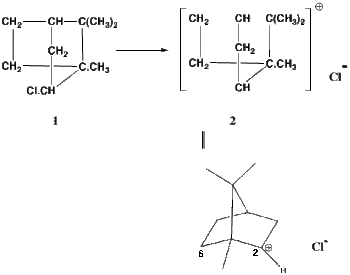Hans Meerwein
Hans Meerwein (May 20, 1879 in Hamburg, Germany – October 24, 1965 in Marburg, Germany) was a German chemist.[1] Several reactions and reagents bear his name, most notably the Meerwein–Ponndorf–Verley reduction, the Wagner–Meerwein rearrangement, the Meerwein arylation reaction, and Meerwein's salt.
Hans Meerwein | |
|---|---|
_2.png) | |
| Born | May 20, 1879 |
| Died | October 24, 1965 (aged 86) |
| Nationality | German |
| Alma mater | University of Bonn |
| Scientific career | |
| Fields | Organic chemistry |
| Institutions | University of Bonn, University of Königsberg, University of Marburg |
| Doctoral students | Georg Wittig |
Life and work

He originally trained to be a chemistry technician or 'chemotechnician' at the Fresenius University of Applied Sciences (between 1898 and 1900) before studying for a chemistry degree at the University of Bonn. After finishing his PhD with Richard Anschütz he worked at the University of Berlin, before returning to Bonn where he became professor in 1914. From 1922 till 1928 he was professor for organic chemistry at the University of Königsberg. The last change in his academic career was to the University of Marburg. The war devastated the Institute and Meerwein was planning the rebuilding which was finished in 1953, the year he retired from lecturing. He conducted experimental work with the help of two postdocs until his death in 1965.
His greatest impact upon organic chemistry was to propose the carbocation 2 as a reactive intermediate, originally as a rationalization of the racemization of isobornyl chloride 1 catalysed by a Lewis acid such as SnCl4. His proposed mechanism for racemization involved a subsequent [2,6] hydride transfer, which allows the carbocation to be located at either of these two symmetric positions. An alternative mechanism—a [1,2] methyl migration, a type of reaction now known as a Wagner–Meerwein shift—was in fact suggested for the first time by Josef Houben and Pfankuch.[2]
Awards
References
- Karl Dimroth (1967). "Hans Meerwein. 1879-1965". Chemische Berichte. 100 (1): LV–XCIV. doi:10.1002/cber.19671000143.
- Houben, Josef; Pfankuch, E. (1933). "Über den Umbau des Camphers und optisch aktiver Systeme der Campherreihe in ihre räumlichen Gegenformen. (Über Campher und Terpene. IX)". Justus Liebig's Annalen der Chemie (in German). 501 (1): 219–246. doi:10.1002/jlac.19335010113.